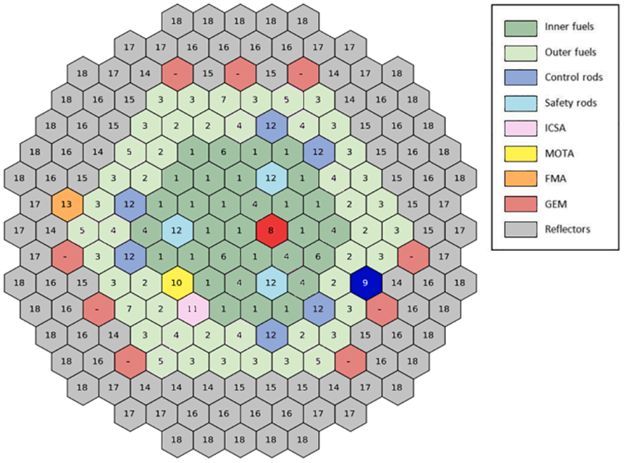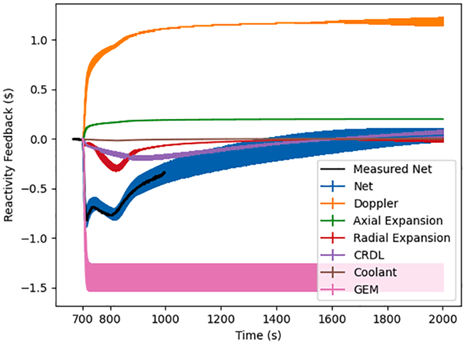Neutronic uncertainty propagation for FFTF LOFWOS test
ARDOR Lab member: Andy Rivas, Jason Hou
Collaborator: Nicolas Stauff (ANL), Tyler Sumner (ANL)
The safety evaluation conducted for licensing a Sodium-cooled Fast Reactor (SFR) may require modeling transients with best-estimate calculation tools that must first be validated against real-world measurements. To provide the community with a valuable benchmarking opportunity for validating SFR analysis tools and methods, the International Atomic Energy Agency (IAEA) initiated a coordinated research project (CRP) in 2018 for the analysis of the Fast Flux Test Facility (FFTF) Loss of Flow Without Scram (LOFWOS) Test #13. This facility was a 400 MW thermal, plutonium–uranium mixed oxide (MOX) fueled, low pressure, high temperature, fast-neutron flux, liquid sodium cooled test reactor.

The primary goal of the analysis done in this study is to determine if the uncertainties coming from nuclear data can explain part of the discrepancies that still exist between the best-estimate results obtained with system simulations and experimental measurements for the FFTF LOFWOS Test #13. The impact of nuclear data uncertainties on transient simulation results of the test were assessed by propagating neutronic uncertainties through safety analyses, while taking into account spatial and reaction-wise correlations within these uncertainties. These nuclear data uncertainties affect the estimates of the neutronic reactivity feedback coefficients, which in turn affect the predicted reactor response by the system model.
The system model estimates of the net reactivity found that the measured experimental data was completely enclosed within the 95% confidence intervals (see below). This result would suggest that the discrepancies observed between the best-estimate simulation and the measured values can be largely explained by nuclear data uncertainties. From the figure it is especially apparent that the uncertainty on reactivity is mostly driven by the uncertainty on the Gas Expansion Module (GEM) worth as has much larger uncertainty bounds.

Reference
- Rivas, A., Stauff, N., Sumner, T., & Hou, J. (2021). Propagating neutronic uncertainties for FFTF LOFWOS Test# 13. Nuclear Engineering and Design, 375, 111047.
